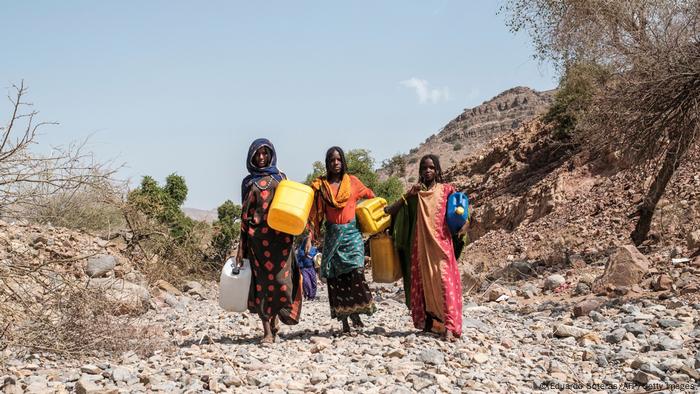As many as 40 million children are "one disease" from catastrophe as the Horn of Africa and Sahel experience the worst drought in four decades, according to UNICEF.

UNICEF said that drought and conflict were driving up water insecurity leading to high levels of water vulnerability
The United Nations International Children's Emergency Fund (UNICEF) has warned that children in the Horn of Africa and Sahel regions "could die in devastating numbers unless urgent support is provided."
That's as the number of drought-stricken people in Ethiopia, Kenya and Somalia — without access to adequate supplies of water — rose from 9.5 million to 16.2 million in the space of just five months, according to the relief agency.
"When water either isn't available or is unsafe, the risks to children multiply exponentially," UNICEF Executive Director Catherine Russell said. "Across the Horn of Africa and the Sahel, millions of children are just one disease away from catastrophe," she added.
Twin threat of drought and conflict
UNICEF said drought and conflict in Burkina Faso, Chad, Mali, Niger and Nigeria were driving up water insecurity, resulting in 40 million children facing high to extremely high levels of water vulnerability.
According to UNICEF's figures, 2.8 million children in the Horn of Africa and Sahel regions are already suffering from severe acute malnutrition, meaning that they are at risk of dying from waterborne diseases at a rate 11 times higher than well-nourished children.
Nearly two-thirds of children affected are under the age of 5. The organization said that as natural water sources dried up, the knock-on effect was significant increases in the price of water. In parts of Kenya prices had risen by as much as 400% while in parts of Somalia increases of up to 85% were reported.

CLIMATE CRISIS: A WORLD LACKING WATER
Famine risk on the Horn of Africa
Ethiopia, Kenya and Somalia are currently experiencing their worst drought in over 40 years after successive failed rainy seasons. The dry conditions have led to a severe food security issue in the region, with 22 million people at risk of starvation. More than 1 million people have been forced to leave their homes during the drought, which is expected to continue for months.
123456789
The worst drought in decades
Climate change and extreme weather events have increased natural disasters over the past 50 years, according to the World Meteorological Organization and the UN Office for Disaster Risk Reduction.
The rainy season for much of sub-Saharan Africa is April through June. Not enough rain fell during that period.
This year would be the third consecutive year where the East African and Horn of Africa regions have not received enough rain.
Although droughts are common in this region, they have become more severe. There is growing scientific evidence that climate change has exacerbated the effects of droughts.
DPA contributed to this report
Edited by: Rob Turner
No comments:
Post a Comment